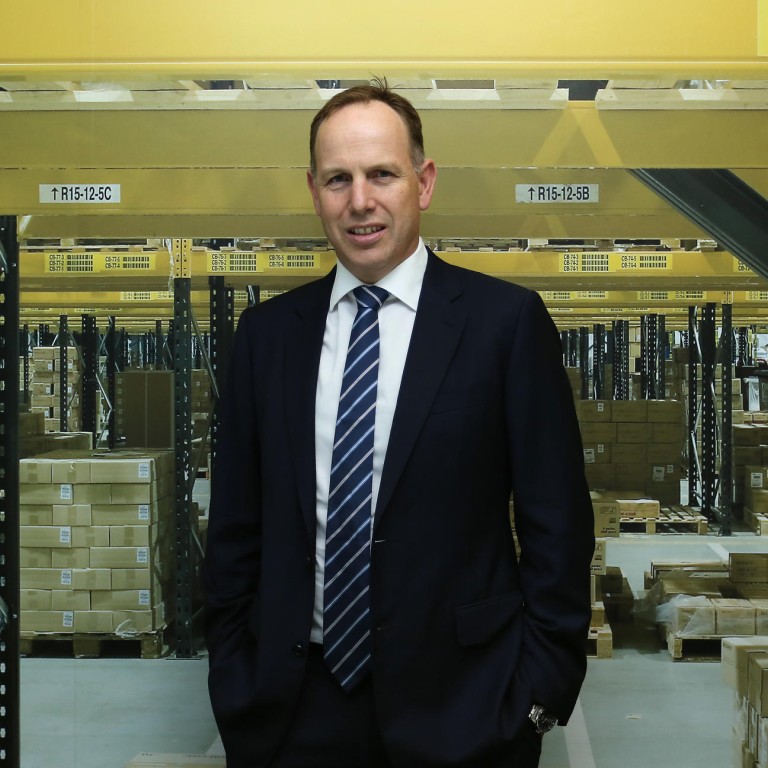
Goodman boss has big plans for Chinese warehouses
Philip Pearce believes strong demand driven by retail sales will help underpin Goodman's expansion plans in mainland China as the company looks for long-term portfolio growth
Despite slowing economic growth on the mainland, and oversupply in some areas, Philip Pearce, the managing director of Goodman Group's Greater China division, is optimistic about the mainland's logistics property industry.
Pearce, who joined Goodman in 2002, has led the team to expand the company's mainland portfolio at a rapid pace in the past few years. The pace will not stop, with anticipation that investment values will triple in the next three years.
Over the past four years, the company has had a very large expansion in China.
We basically grew our portfolio from about 250,000 to 300,000 sq metres to about 1.4 million sq metres. In terms of dollar value, it's roughly US$1 billion.
In addition to that, we have got development work, which is about 800,000 sq metres.
When the 800,000 sq metres of developments are complete, there will be 2.2 million sq metres of products.
We aim to have continuous development. The portfolio should grow by 900,000 sq metres a year.
There are a number of people investing in the logistics sector. We believe that we are No2 in terms of size.
When we talk about warehouses, we don't count individual buildings. We talk about industrial parks.
There are 25 parks from Shanghai to Beijing, Tianjin, Hefei, Chengdu and Chongqing. They are spread over a large area.
Recently, we have gone to new cities such as Shenyang and Wuhan, and we will start some projects in Huizhou in the coming months.
The aim is to have a national network. But obviously we are not going to be in every city. We focus on cities that have strategic geographical locations, like Wuhan, which is very centrally located, or that are transport hubs.
The amount of international standard warehouses is very low compared to the population in those main city centres. There is a huge growth potential.
Goodman's portfolio in Australia is probably US$10 billion. There are about 26 million people in Australia. Shanghai's market may be bigger. [Mainland China] is still a developing market in terms of its services economy.
There are a lot of people entering the market because the outlook is quite good. A lot of the traditional developments such as residential developments and commercial developments are not attractive now. People are looking at alternative real estate classes to get exposure.
Our investments all around the world are long-term. We will continue to grow those markets. How much they grow will depend on the dynamic. In the next three years, we would like to see our assets in China reach US$3 billion, which is triple where we are now.
The most important thing for us is demand. Demand is strong. We have not actually seen a drop in demand. The big driver of demand for us is retail sales. They are growing quite well, at double digits.
What we care about is that there are a lot of people coming to the sector. That is another reason why we are selective in cities that we are developing in. There are some cities in some parts of China facing oversupply.
The biggest logistics market in the world is the US. It is followed by continental Europe. China is not going to overtake the US in the next five years. But China will probably be the third-largest logistics market in the world in the next five years. The outlook is good.
Space to Work is the name for Goodman's activity-based working model. In 2013, Space to Work launched in Shanghai when the local team moved into its new ABW (activity-based working) space at the Kerry Centre, Jingan. The Goodman offices in Beijing and Chengdu followed suit in 2014 and plans are currently in progress for the Hong Kong office.
Space to Work dispenses with unnecessary space taken up by permanent workstations and storage facilities in exchange for a highly flexible area and mobile technology.
We provide about eight traditional seats for every 10 people. In addition, there are many new work points and collaborative work settings that help us to work more efficiently and as a team. When you change activity, you change work setting or work point.
No, I don't.

